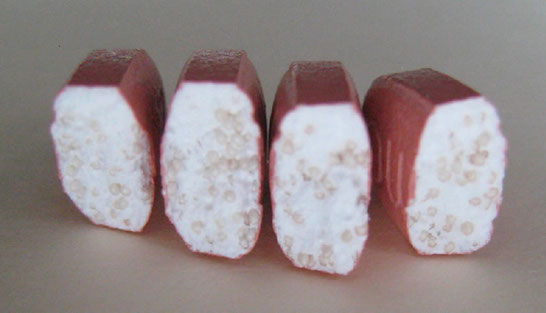Omeprazole is a pro-drug that accumulates in the acid space of the parietal cell where it is transformed to the active state. However the drug has several characteristics which determine its access to this site of action. Omeprazole is a weak base which is stable at neutral pH but decomposes rapidly in an acidic environment. Therefore, in order for it to reach the small intestine where it is absorbed, it must be protected from gastric fluid when administered orally. These properties pose challenges for drug formulators seeking to provide optimal delivery of the drug.
The MUPS® tablet formulation of omeprazole employs patented technology in a delivery system which disperses rapidly in the stomach to release about 1,000 small (0.5mm) individually enteric coated units or ‘micropellets’ of omeprazole as the magnesium salt. These pellets are designed to dissolve in the high pH of the small intestine to release omeprazole for absorption.
The manufacture of MUPS® tablets has multiple steps. First omeprazole magnesium is micronized before suspension and layering onto sugar microspheres (0.250-0.355mm). These pellets are then sub-coated to separate the omeprazole from the enteric coating which is applied next. The pellets are then given a final protective over-coating before being mixed with tabletting excipients and compressed into tablets which themselves are film-coated.
Thus each MUPS® pellet has a 4 layer ‘onion’ structure and each tablet is comprised of multiple pellets which are apparent if the tablet is broken (figure 1).
SelfCare 2011;2(S1):1-14



Write a comment